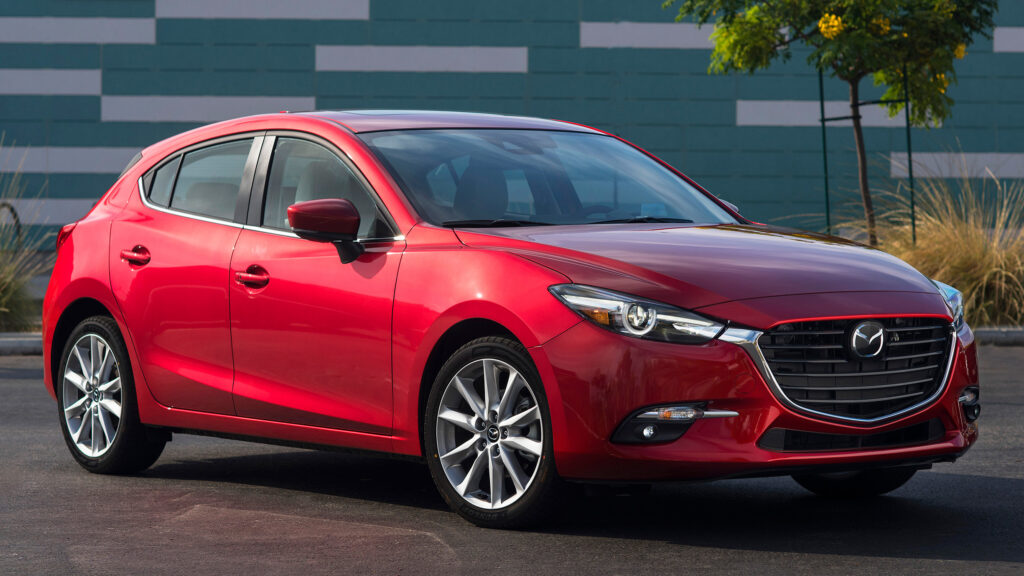The Next Mazda3 Might Not Even Be A Mazda At All

- Mazda may replace the 3 with a China-built electric version in some markets.
- Trademark filings for Mazda3e hint at a Deepal-based model under Changan.
- The sedan may grow in size, offering more tech, screens, and premium touches.
Mazda has been busy polishing its lineup of straight-six-powered crossovers, pouring attention into its larger and more profitable models. Yet, as the Hiroshima brand shifts focus to electrification and SUVs, the rest of its range has been quietly gathering dust.
Future Cars: Nissan’s 2027 Versa Could Prove Cheap Doesn’t Have To Mean Boring
Apart from the refreshed CX-5 and a few Chinese-sourced EVs, not much has been happening in Mazda’s compact corner. And the silence surrounding a successor to the 3 has been deafening, with no sign of it anywhere in the brand’s future product roadmap.
Reports suggests the compact offering won’t see light beyond 2026, which, if true, is an utter shame for a company that once prided itself on fun-driving sedans and hatchbacks. Has Zoom-Zoom transitioned into the land of doom?
Could China Keep the 3 Alive?

When Mazda axed the long-serving 6 sedan and wagon, many thought it would be replaced by a rear-drive, inline six proposition to compete with BMW M340i and Audi’s S4.
That dream never materialized. Instead, select markets such as Europe and Australia received the Deepal-based Mazda 6e/EZ-6, while North America was left out of the equation.
This begs the question: could the 3 see the same fate and become another Deepal-derived product? After all, it would make sense as Mazda is a small player compared to many of its rivals, leaning into Changan’s portfolio helps keep development costs in check.
Also: New Mazda 6e Costs Twice As Much In Europe As It Does In China

Adding weight to the theory are recent trademark filings for the Mazda3e in Australia, the UK, and Europe, while the Chongqing-based automaker has also unveiled its smaller L06 sedan under the newly formed China Changan Automobile Group.
While purely speculative at this point, Deepal’s L06 could very well underpin the first-ever Mazda3e. Curious as to what form it could take? Let’s look at what we can expect.
An Electrified Twist

If Mazda takes the same route as the 6e, the 3e would borrow Deepal’s existing hardware. The L06 itself is set to launch in two forms: a range-extended hybrid (EREV) and a fully electric variant.
The EREV pairs a 97 hp 1.5-litre naturally aspirated engine with a 28.39 kWh LFP battery and a 190 kW (255 hp) electric motor on the rear axle. It offers an EV-only range of 180 km (about 112 miles) on the WLTP cycle, while the internal combustion engine’s fuel consumption is rated at 4.38 litres per 100 km, or roughly 54 mpg.
The electric version of the Deepal L06 is equipped with a single rear axle motor that produces 268 hp (200 kW). This variant will offer two battery packs, a 56 kWh battery and a larger 69 kWh pack with a range of 416 miles (670 km).
Interior Smarts

Inside, expect a more premium aesthetic compared to its Deepal donor car, and (annoyingly) the all-screens trend as seen in the new CX-5 and EZ-60 SUVs.
A 3-nanometre automotive-grade cockpit chip will help power the 50-inch AR-HUD (Augmented Reality Head-Up Display, infotainment, and Level 2+ driver assist systems, with the latter benefiting from standard LiDAR fitment.
Read: Mazda’s Global $16,800 Chinese SUV Makes America’s Cheapest Cars Look Overpriced
It has more space, too. Measuring 190 inches (4830 mm) in length, the sedan is notably longer than the current Mazda3 and just a whisker shorter (and wider) than the discontinued 6. This increase repositions it into a larger segment, which will help remedy one of the 3’s most significant shortfalls: tight rear seating.
Kodo Design

Our artistic interpretation of the Mazda 3e retains the automaker’s Kodo design language but keeps the donor car’s glasshouse and doors. The front end is an evolution of the Mazda 6e, with an illuminated front panel flanked by split-tier headlamps and active grille shutters in the lower portion of the bumper.
More: BMW’s New iX4 Could Finally Give The Model Y Something To Worry About
The side profile sports curvaceous sheet metal, semi-flush door handles and a coupe‑like roofline. Love or hate it, the LiDAR unit sits at the top of the windscreen, while out back, the sports a rear diffuser and full‑width taillight strip with circular elements.
Final Thoughts

It’s worth noting that Mazda has yet to confirm whether the current 3 will receive another generation or if a reskinned Changan product will replace it.
If the latter comes to fruition (likely in the next 24 months), the Tesla Model 3 rival will be off the cards for North American consumption. Still, it will rival a variety of electrified options like Hyundai’s Ioniq 6 and BYD Seal in European and Asia Pacific markets.
Should Mazda tap into its Changan joint venture for the next 3? Share your views in the comments below.



















